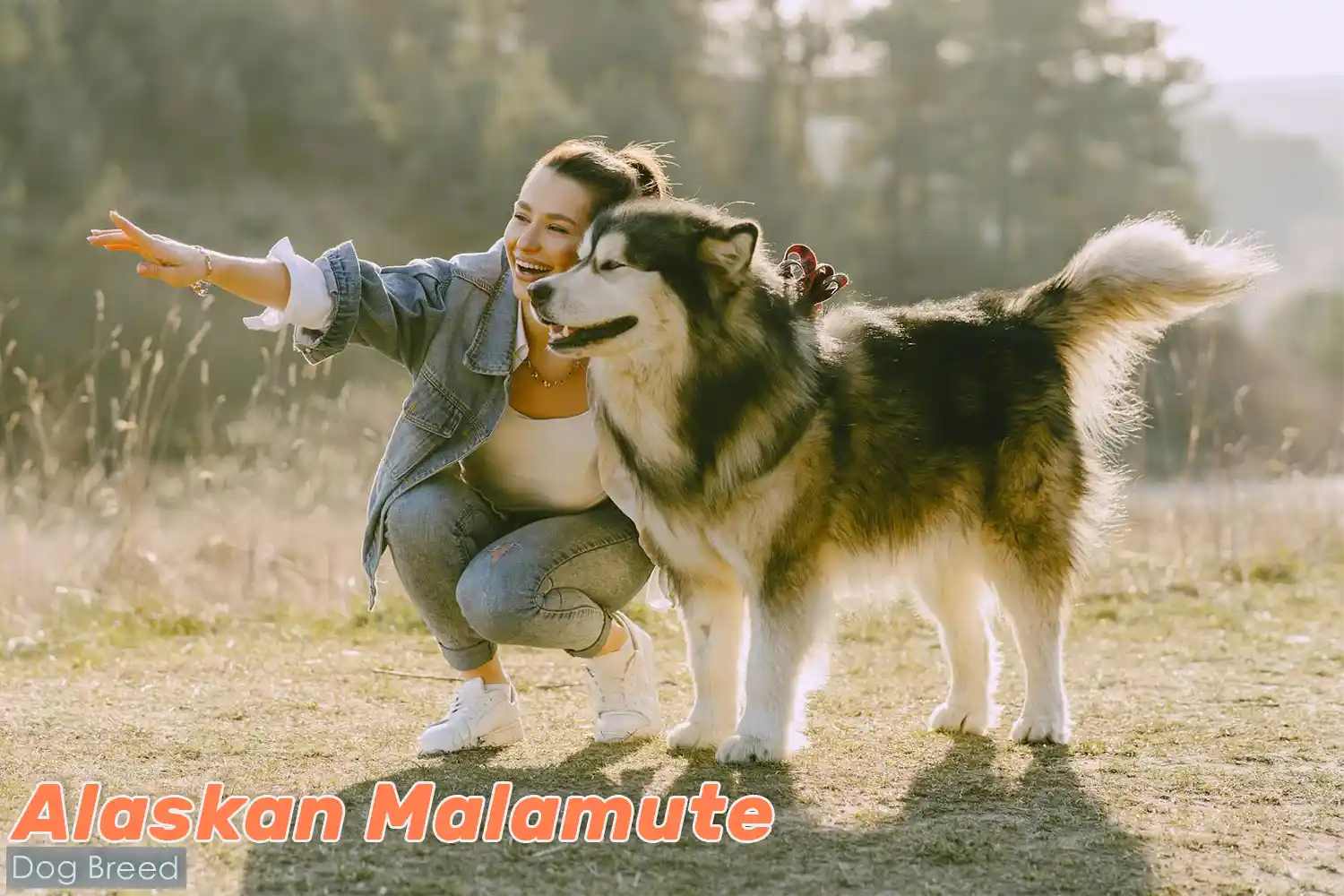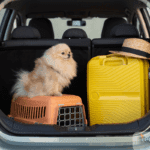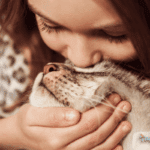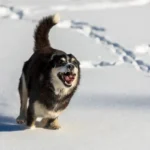Alaskan Malamutes are majestic and powerful, renowned for their striking wolf-like appearance, unwavering strength, and loyal companionship. As one of the oldest Arctic sled dog breeds, they have a history steeped in survival and endurance, making them both a practical working dog and a cherished family pet.
With their deep bond to their pack and an innate need for activity, Malamutes bring energy and devotion to every home. However, their independent spirit and high-energy demands require dedicated care and training, making them a rewarding choice for experienced owners.
“As a veterinarian, I often remind pet parents that Alaskan Malamutes thrive in active households where their exercise needs are met. Regular veterinary checkups, a balanced diet, and early socialization are key to their long-term health and happiness,” shares Dr. Esther Knoetze, BSc, BVSc.
This vet-approved guide will walk you through everything you need to know about Alaskan Malamutes from their Arctic origins to their care, training, and health considerations ensuring you feel confident and informed about welcoming this remarkable breed into your life.
Alaskan Malamutes are known for their intelligence and independent nature. Learning “Essential Dog Training Commands” can help build trust and improve their responsiveness.
Quick Facts: Alaskan Malamute
Here’s a snapshot of the Alaskan Malamute traits to help you understand their unique qualities:
| Characteristic | Description | Rating |
|---|---|---|
| Size | Males: 25 in (63 cm), 85–100 lbs (38.5–45 kg); Females slightly smaller | ⭐⭐⭐⭐⭐ |
| Average Lifespan | 10–14 years | ⭐⭐⭐ |
| Intelligence Ranking | Highly intelligent but independent; requires patient training | ⭐⭐⭐⭐ |
| Exercise Requirements | Extremely high; need 1–2 hours of rigorous physical and mental stimulation daily | ⭐⭐⭐⭐⭐ |
| Grooming Needs | High; regular brushing to manage heavy seasonal shedding | ⭐⭐⭐⭐ |
| Training Adaptability | Moderately trainable; best with firm, consistent, and positive reinforcement | ⭐⭐⭐ |
| Compatibility with Children | Excellent; gentle and loyal when properly socialized | ⭐⭐⭐⭐ |
| Energy Level | High; thrives on structured physical and mental activities | ⭐⭐⭐⭐⭐ |
| Shedding Level | High; frequent seasonal shedding | ⭐⭐⭐⭐ |
| Apartment Living | Not ideal; prefers homes with ample outdoor space | ⭐⭐ |
| Health Issues | Prone to hip dysplasia, bloat, and hypothyroidism | ⭐⭐⭐ |
| Cost of Ownership | High; includes food, grooming, and veterinary care | ⭐⭐⭐⭐ |
| Vocal Tendency | Moderate to high; known for their howls | ⭐⭐⭐ |
| Social Needs | Very high; thrives on companionship and a strong family bond | ⭐⭐⭐⭐⭐ |
- • Loyal and Protective: Alaskan Malamutes form deep emotional bonds with their families. Their protective instincts make them excellent guardians, but early socialization and training are crucial to manage their independence.
- • Energetic and Adventurous: Built for work and endurance, Malamutes thrive on activities like hiking, pulling sleds, or running. Their high energy requires structured outlets to prevent boredom and destructive behaviors.
- • Independent Thinkers: While intelligent, Malamutes have a strong-willed nature, which can pose training challenges. Consistent, reward-based training is essential for positive outcomes.
- • Cold-Climate Adapted: Their dense double coat makes them perfect for cold environments but can be a challenge in warmer climates. Proper cooling measures and hydration are vital in hot weather.
- • Heavy Shedders: Seasonal shedding can overwhelm unprepared owners, but regular grooming minimizes fur buildup and keeps their coat healthy.
- • Active Family Companions: Malamutes are ideal for active families who can provide time, space, and attention. Their love for people and playful nature make them wonderful additions to outdoor-loving households.
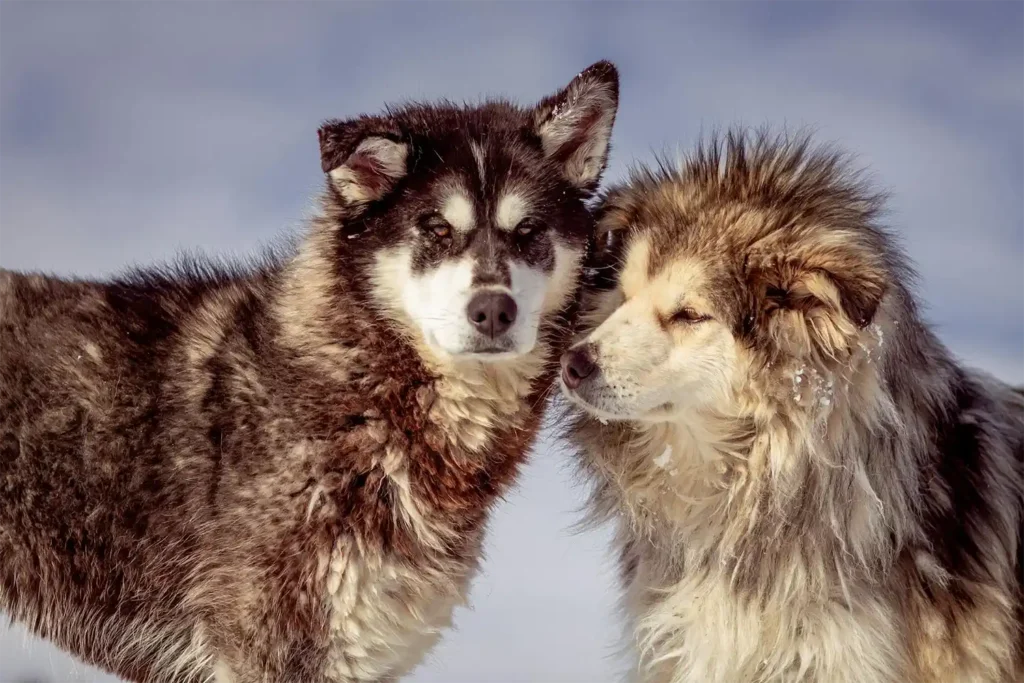
History and Origins of the Alaskan Malamute
The Alaskan Malamute, revered as one of the oldest Arctic sled dog breeds, carries a legacy of strength, loyalty, and resilience. Developed by the Mahlemut people of Alaska, this iconic breed was essential for survival in the unforgiving Arctic. From pulling sleds laden with supplies to aiding in hunts, Malamutes were indispensable partners, embodying the endurance and intelligence needed for life in extreme conditions.
Quick Facts About Alaskan Malamute Origins
| Aspect | Detail |
|---|---|
| Geographic Origin | Arctic regions of Alaska, USA |
| Purpose | Sled-pulling, transporting goods, and assisting in hunting |
| First Recognition | Recognized by the American Kennel Club (AKC) in 1935 |
| Role in History | Vital to Arctic survival for indigenous tribes such as the Mahlemut people |
| Breed Development | Bred for endurance, strength, and ada |
From Survival to Modern-Day Companionship
Alaskan Malamutes trace their roots back thousands of years to the Arctic, where they were bred and cared for by the Mahlemut, an Inuit tribe in Alaska. The tribe needed dogs that could not only withstand extreme cold but also pull heavy loads over long distances and assist in hunting large game. The Malamute’s exceptional stamina and strength were key to the tribe’s survival in such a challenging environment.
The Perfect Arctic Companion
The Mahlemut people carefully bred Malamutes for their:
- Strength: Capable of hauling heavy sleds across icy landscapes.
- Endurance: Built for sustained physical effort over vast distances.
- Thick Double Coat: Perfect for insulation against frigid Arctic temperatures.
- Loyalty and Bonding: Essential for cooperation and teamwork in harsh conditions.
Unlike faster sled breeds like the Siberian Husky, Malamutes prioritized power over speed, excelling in tasks requiring strength and persistence. This made them invaluable for transporting goods and aiding in large-game hunts.
Evolution Through History
The breed gained wider recognition during the Klondike Gold Rush of the late 19th century when prospectors relied on their sled-pulling prowess. Later, during World War II, Malamutes served in search-and-rescue missions and transport roles, solidifying their reputation as versatile and reliable working dogs.
In 1935, the American Kennel Club (AKC) officially recognized the Alaskan Malamute, celebrating its enduring contributions to human survival and companionship. Since then, Malamutes have transitioned into loyal family pets, retaining their high-energy spirit and love for outdoor adventures.
The Legacy of the Alaskan Malamute
Today, Alaskan Malamutes continue to embody their heritage. They are celebrated for their unwavering strength, warm demeanor, and ability to adapt to modern family life while retaining their natural instincts. Their loyalty and intelligence make them beloved companions, but their high energy and need for structured activity pay homage to their Arctic origins.
Before welcoming a Alaskan Malamute into your home, consider these “10 Essential factors for bringing a new pet home”.
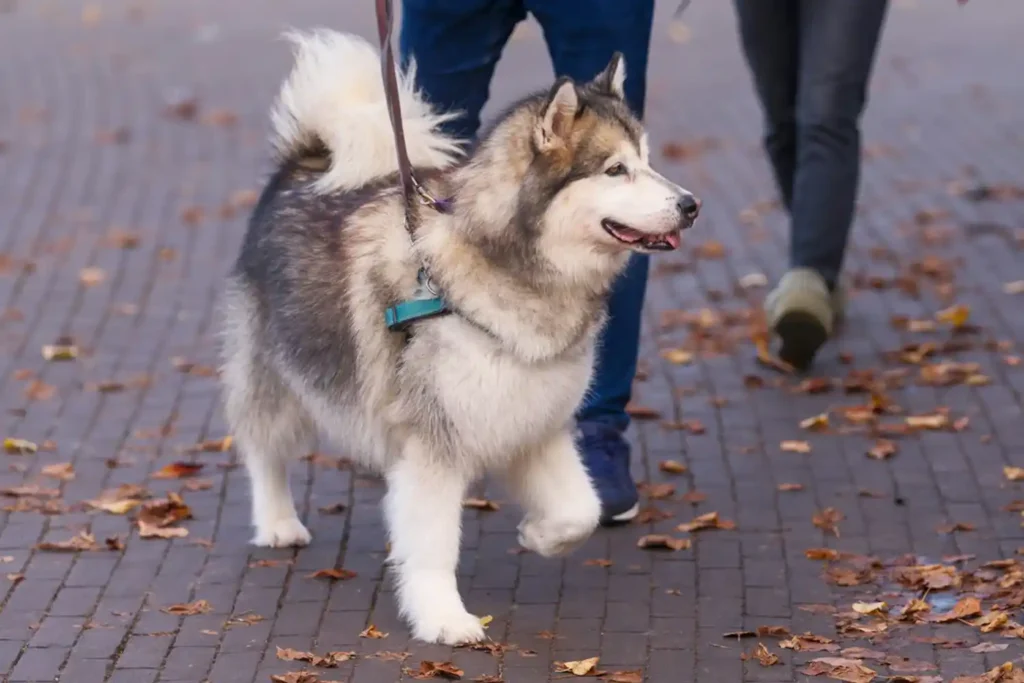
Personality Traits of the Alaskan Malamute
The Alaskan Malamute is a breed that embodies strength, intelligence, and an enduring sense of loyalty. Known for their playful and affectionate nature, Malamutes are also independent thinkers, making them both rewarding and challenging companions. While their sled-pulling heritage has shaped their endurance and high energy, their social and emotional sensitivity makes them wonderful additions to the right home.
Table: Alaskan Malamute Personality Profile
| Trait | Description |
|---|---|
| Intelligence | Highly intelligent but independent; thrives on mental challenges. |
| Energy Level | Extremely high; requires 1–2 hours of vigorous exercise daily. |
| Social Interaction | Affectionate and bonds deeply with family; friendly but not overly clingy. |
| Protectiveness | Protective of their family but not aggressive; will alert if needed. |
| Trainability | Moderately trainable; needs consistent, patient, and firm leadership. |
| Compatibility with Kids | Excellent; gentle and playful when well-socialized. |
| Compatibility with Pets | Can coexist with other pets if introduced early, but prey drive may be high. |
Loyal and Affectionate Companions
Alaskan Malamutes form deep bonds with their families, earning their reputation as loyal and loving companions. They thrive in homes where they are included in daily activities and treated as an integral part of the family. Their loyalty often translates to protective instincts, though they are typically friendly rather than aggressive.
Real-Life Example: Owners often share stories of their Malamutes waiting by the door for loved ones or providing comfort during stressful times, showcasing their devotion and emotional connection.
Energetic and Playful
Rooted in their working-dog heritage, Malamutes have boundless energy and a love for adventure. Without proper outlets for their energy, such as hikes, sledding, or agility exercises, boredom can lead to destructive behaviors like chewing or digging.
Independent and Intelligent
Alaskan Malamutes are exceptionally intelligent but also fiercely independent, requiring consistent, patient training. They respond best to positive reinforcement paired with firm leadership, as overly harsh methods may lead to stubbornness or disengagement.
Pro Tip: Keep training sessions engaging and varied. Using puzzle toys, scent work, and advanced commands helps keep them mentally stimulated and reinforces good behavior.
Real-Life Example: Many Malamutes excel in canine sports or sledding competitions, showcasing their intelligence and problem-solving abilities.
Friendly and Social
Despite their imposing size, Malamutes are naturally friendly and outgoing. While not typically reserved, they do exhibit strong protective instincts toward their families. Early socialization is critical to ensure they remain well-mannered and confident in diverse environments.
Key Insight: Introduce your Malamute to a variety of people, pets, and settings from an early age to curb undesirable behaviors, such as excessive prey drive or timidness.
Real-Life Example: Families often describe Malamutes as peacekeepers, easily adapting to multi-pet households and forming strong bonds with children.
Emotionally Attuned
Malamutes are deeply attuned to their owners’ emotions, often offering quiet comfort during difficult times. Their expressive eyes and vocalizations create a unique bond, making them exceptional companions for those seeking a dog with emotional depth.
Fun Fact: Malamutes are known for their “talking” abilities, using howls, yips, and murmurs to communicate their needs and moods, further endearing them to their families.
Real-Life Example: Owners frequently share stories of their Malamutes providing intuitive support during moments of illness or sadness, such as lying close or offering a reassuring nudge.
Why Choose a Alaskan Malamute?
If you’re seeking a loyal, intelligent, and adventurous companion, the Alaskan Malamute is an ideal choice for active households. Their playful nature, emotional depth, and working-dog spirit make them a breed like no other, provided their physical and mental needs are met.
Alaskan Malamutes are known for their intelligence and independent nature. Learning “Essential Dog Training Commands” can help build trust and improve their responsiveness.
Alaskan Malamutes thrive on companionship but can develop separation anxiety. Learn more about “Understanding and Managing separation anxiety in dogs”.
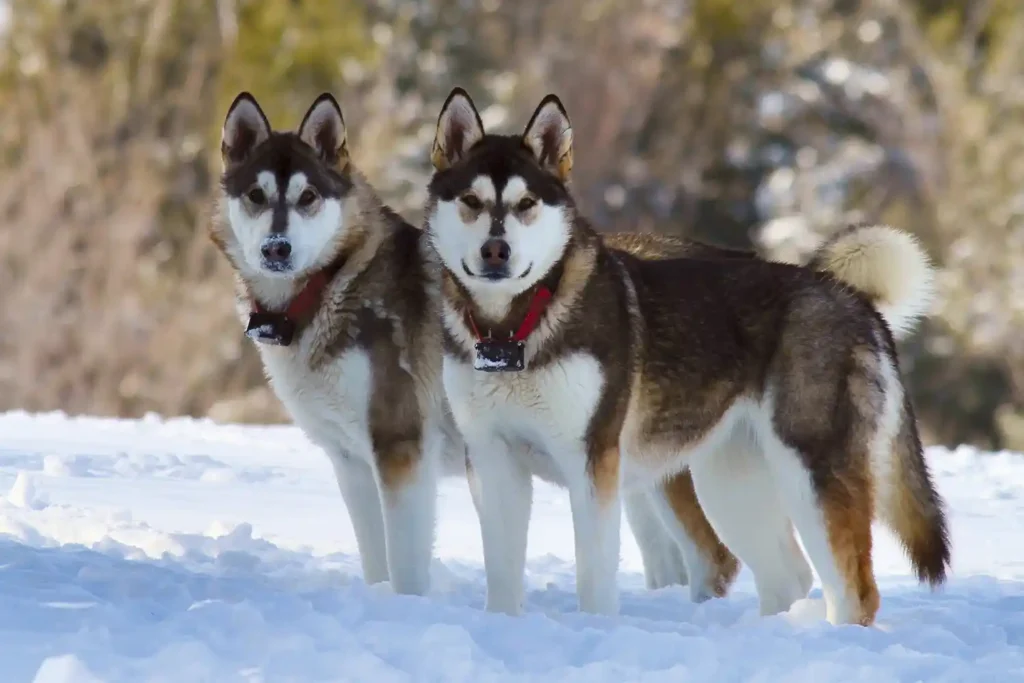
Physical Characteristics of the Alaskan Malamute
The Alaskan Malamute’s powerful build, dense coat, and wolf-like appearance make it one of the most striking dog breeds. Every aspect of their physique reflects their history as Arctic sled dogs, bred for strength, endurance, and survival in extreme conditions. These traits contribute to their beauty and practicality as working dogs and beloved companions.
Size and Build
| Trait | Description |
|---|---|
| Average Height | Males: 25 in (63 cm); females: 23 in (58 cm) |
| Average Weight | Males: 85–100 lbs (38.5–45 kg); females: 75–85 lbs (34–38.5 kg) |
| Body Type | Strong, muscular, and balanced; built for power and endurance |
Alaskan Malamutes are robust and athletic, with a broad chest, straight back, and powerful limbs that allow them to excel in physically demanding tasks like sledding and hiking. Their muscular build is a testament to their working heritage, emphasizing stamina and strength over speed.
Notable Features
The Alaskan Malamute’s physical traits combine functionality with a majestic appearance. Key features include:
- Eyes: Medium-sized, almond-shaped, and brown, radiating warmth, intelligence, and curiosity.
- Ears: Triangular, erect, and set wide apart, contributing to their alert, expressive demeanor.
- Muzzle: Broad and deep, with a strong jaw suited for pulling and carrying tasks.
- Tail: Long and bushy, carried in a gentle arch over the back, enhancing their wolf-like appearance.
Fun Fact: The Malamute’s tail helps provide warmth in cold climates. When curled up to rest, they often wrap their tail around their nose for extra insulation.
Coat and Colors
| Trait | Description |
|---|---|
| Coat Type | Dense, double coat: thick, woolly undercoat and coarse outer coat |
| Coat Texture | Straight or slightly coarse, offering insulation against harsh weather |
| Coloring | Ranges from light gray and black to sable and red, with white accents |
The Alaskan Malamute’s double coat is its most recognizable feature. The soft undercoat insulates against freezing temperatures, while the coarse outer layer repels moisture and dirt. These coats, designed for Arctic survival, require consistent grooming to prevent matting and manage heavy seasonal shedding.
Key Insight: Regular brushing, especially during spring and fall shedding seasons, keeps their coat healthy and reduces fur buildup around the home.
Facial Features and Posture
| Feature | Description |
|---|---|
| Eyes | Medium, almond-shaped, reflecting warmth and intelligence |
| Ears | Triangular, erect, set wide apart, adding to their alert expression |
| Tail | Bushy and long, carried in a gentle arch over the back |
Malamutes possess a confident and approachable posture, blending their working-dog strength with a calm and friendly demeanor. Whether in motion or at rest, their balanced gait and expressive features reflect their readiness for adventure.
Key Physical Traits of the Alaskan Malamute
- Athletic Build: Ideal for endurance activities like sledding, hiking, and pulling weight.
- Dense Double Coat: Offers unmatched protection in cold climates but demands regular grooming to manage shedding.
- Wolf-Like Features: Almond-shaped eyes, erect ears, and bushy tails contribute to their striking appearance.
- Paw Structure: Large, snowshoe-like paws with tough pads provide traction on icy terrain.
Why Understanding These Characteristics Matters
Understanding the Alaskan Malamute’s physical traits helps owners meet their grooming, exercise, and care needs. Their muscular build and thick coats are not just aesthetic but essential for their health and well-being, emphasizing the importance of proper maintenance and activity.
Why the Alaskan Malamute Stands Out
The Alaskan Malamute’s physical traits are a perfect blend of strength, endurance, and beauty. Their athletic build, dense coat, and expressive features make them one of the most recognizable breeds, while their stamina and adaptability ensure they excel in various roles, from sledding to family companionship. For owners seeking a dog that embodies functionality and majesty, the Malamute delivers on every front.
Did you know that some Alaskan Malamute love sticking out their tongues? Find out other reasons why in this vet-reviewed guide.
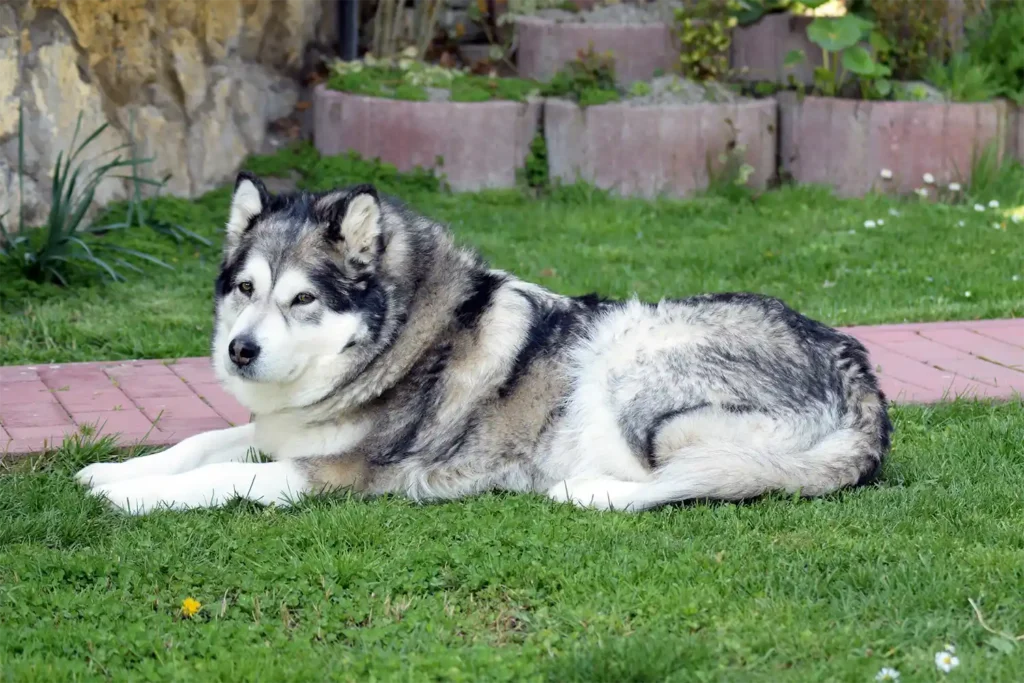
Health and Lifespan of the Alaskan Malamute
The Alaskan Malamute is known for its strength and resilience, but like all breeds, it is predisposed to certain health conditions. With an average lifespan of 10 to 14 years, these majestic dogs can enjoy long, active lives with the right care. Proactive health management, including regular veterinary checkups, balanced nutrition, and consistent exercise, is essential to keeping your Malamute happy and healthy.
Average Lifespan of Alaskan Malamute
Alaskan Malamutes typically live 10 to 14 years, slightly above average for large breeds. Genetics, preventive care, and lifestyle choices all play a crucial role in their longevity. While Malamutes are naturally hardy, early detection and management of potential health issues are vital for ensuring their well-being.
Common Health Issues in Alaskan Malamute
Understanding the health challenges Malamutes may face helps owners take preventive measures. Here are some common health concerns:
| Condition | Description |
|---|---|
| Hip Dysplasia | A genetic condition causing improper hip joint development, leading to pain and arthritis. |
| Elbow Dysplasia | Abnormal elbow joint development, resulting in discomfort and mobility issues. |
| Bloat (GDV) | A life-threatening condition where the stomach twists; requires immediate veterinary care. |
| Hypothyroidism | Hormonal imbalance causing lethargy, weight gain, and coat thinning. |
| Inherited Polyneuropathy | Neurological disorder affecting muscle strength and coordination. |
| Cataracts | Often age-related, leading to vision impairment or blindness. |
| Obesity | Excessive weight from poor diet or insufficient exercise, impacting mobility and joint health. |
Preventive Care and Regular Vet Checkups
Preventive care is the foundation of a healthy life for your Malamute. Regular vet visits, proper grooming, and a balanced lifestyle can prevent or mitigate health issues.
| Health Aspect | Recommended Action | Frequency |
|---|---|---|
| Hip and Joint Health | Monitor for stiffness or limping; use joint supplements as needed. | Annually or as needed |
| Weight Management | Provide a balanced diet and regular exercise to prevent obesity. | Monthly monitoring |
| Bloat Prevention | Feed smaller meals and avoid exercise immediately after eating. | Daily precaution |
| Thyroid Screening | Conduct blood tests to detect hypothyroidism early. | Annually |
| Eye Health | Screen for cataracts and other age-related issues. | Annually |
| Dental Care | Brush teeth and offer dental chews to maintain oral health. | Weekly; annual cleaning |
Signs of Illness to Watch For in Alaskan Malamute
Recognizing early signs of illness ensures timely intervention and better outcomes. Watch for:
- Mobility Issues: Limping, stiffness, or difficulty rising may signal joint problems.
- Digestive Distress: Vomiting, bloating, or restlessness could indicate bloat, which requires immediate attention.
- Weight Changes: Unexplained weight gain or loss may point to metabolic or thyroid disorders.
- Lethargy or Fatigue: Reduced energy levels may indicate underlying health concerns.
- Eye Cloudiness: Symptoms of cataracts or other vision issues in older dogs.
- Excessive Scratching or Hair Loss: May signal hypothyroidism or skin conditions linked to improper grooming.
Some owners explore options like “CBD oil for dogs” to manage joint discomfort.
Alaskan Malamute may face certain health challenges. Stay informed about the 11 warning signs your dog needs a vet visit.
Ensuring a Healthy Life for Your Alaskan Malamute
With proper care and attention, Alaskan Malamutes can enjoy long, active lives. Their energetic nature and strong bond with their family mean they thrive in homes that provide consistent physical activity, mental stimulation, and preventive healthcare.
Key Areas of Care:
- Balanced Nutrition: Provide a diet tailored to their size, age, and activity level. Avoid overfeeding to reduce strain on joints.
- Regular Exercise: Maintain their stamina and health with 1–2 hours of vigorous activity daily.
- Grooming and Hygiene: Regular brushing and ear cleaning prevent infections and coat-related issues.
- Routine Veterinary Screenings: Schedule annual exams and screenings for common health concerns.
Why Health Awareness Matters
Understanding and addressing the health needs of Alaskan Malamutes ensures they remain loyal, loving companions for many joyful years. By prioritizing preventive care and maintaining a healthy lifestyle, you can help your Malamute lead a vibrant and fulfilling life.
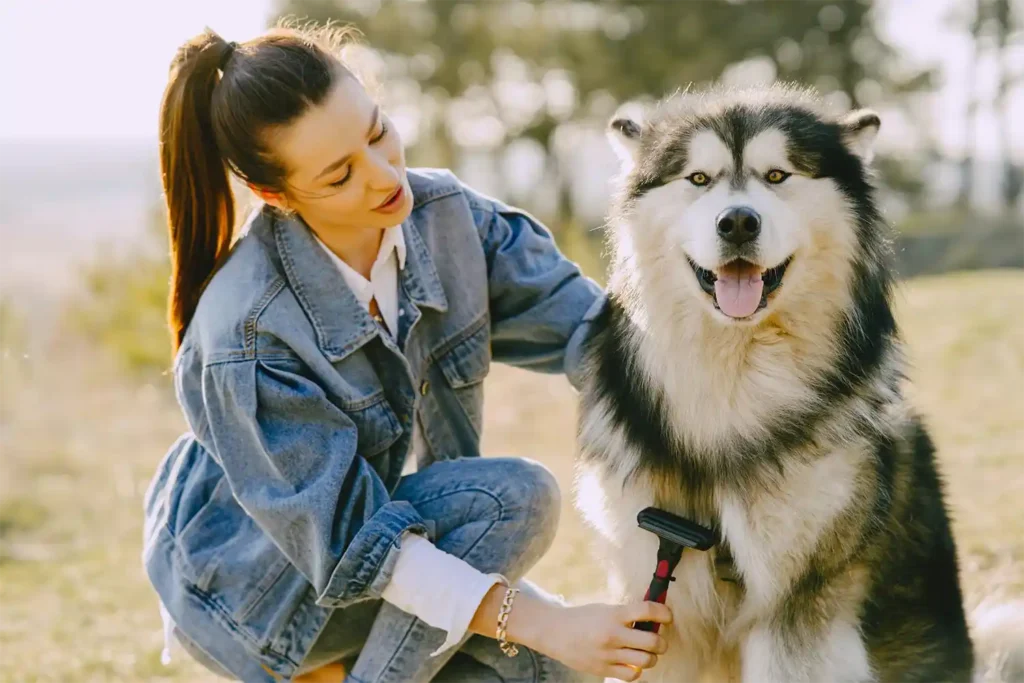
Caring for an Alaskan Malamute: Grooming, Diet and Enrichment Tips
Alaskan Malamutes are intelligent, high-energy dogs with a deep need for structured care and activity. By addressing their grooming, nutritional, and mental stimulation needs, you can help your Malamute thrive as a loyal and healthy companion.
Table: Care Requirements for Alaskan Malamute
| Care Aspect | Requirement Level | Frequency | Details | Importance Rating |
|---|---|---|---|---|
| Grooming | High | 2–3 times weekly | Regular brushing, occasional bathing, and ear cleaning to maintain health. | ⭐⭐⭐⭐⭐ |
| Feeding | High | Daily | High-protein diet tailored to their size and activity level. | ⭐⭐⭐⭐⭐ |
| Exercise | Very High | Daily | At least 1–2 hours of rigorous physical activity and enrichment. | ⭐⭐⭐⭐⭐ |
| Mental Stimulation | Very High | Continuous | Puzzle toys, interactive games, and training sessions. | ⭐⭐⭐⭐⭐ |
| Environment | High | Continuous | Secure outdoor spaces and comfortable indoor resting areas. | ⭐⭐⭐⭐ |
Grooming: Managing the Majestic Malamute Coat
The Alaskan Malamute’s double coat is stunning but requires consistent care to manage shedding and prevent matting. Their thick coat, designed for Arctic survival, can trap debris and cause skin issues without regular grooming.
Key Grooming Practices:
- Brushing: Use an undercoat rake or slicker brush 2–3 times weekly, increasing to daily during shedding seasons. Regular brushing minimizes shedding and distributes natural oils.
- Bathing: Bathe every 6–8 weeks with a dog-safe shampoo. Overbathing can strip essential oils, so avoid frequent baths.
- Ear Care: Clean their ears weekly to prevent infections caused by trapped moisture.
- Nail Trimming: Trim nails every 2–3 weeks to prevent overgrowth, which can cause discomfort.
- Dental Hygiene: Brush teeth 2–3 times weekly and offer dental chews to maintain oral health.
Diet and Nutrition: Fueling Their Energy and Vitality
As a working breed, Alaskan Malamutes need a nutrient-dense diet to maintain their energy levels and physical health.
Key Nutritional Needs:
- High-Quality Protein: Opt for premium dog food with real meat or fish as the primary ingredient to support muscle development.
- Healthy Fats: Omega-3 and Omega-6 fatty acids (from fish oil or flaxseed) promote coat health and joint support.
- Portion Control: Overfeeding can lead to obesity and strain joints, so monitor portion sizes closely.
Feeding Schedule:
- Adults: Two balanced meals daily, tailored to their weight and activity level.
- Puppies: Three to four smaller meals daily to support rapid growth
Hydration
Always provide fresh water, especially after exercise or during warm weather. Active dogs like Alaskan Malamute require consistent hydration to stay healthy.
Exercise: Channeling Their Energy
Alaskan Malamutes require vigorous exercise and mental stimulation to stay healthy and prevent destructive behaviors.
Physical Activity Recommendations:
- Daily Exercise: At least 1–2 hours of activity like hiking, running, or weight-pulling exercises.
- Low-Impact Activities: Swimming is an excellent option for Malamutes prone to joint strain.
- Advanced Enrichment: Sledding clubs or agility training provide physical and mental challenges.
Mental Stimulation:
- Puzzle Toys and Games: Encourage problem-solving and reward curiosity.
- Interactive Training: Use positive reinforcement to teach commands or advanced tricks.
- Scent Work and Tracking: Engage their natural instincts with hide-and-seek or scent-tracking games.
Interactive toys and training sessions are some of the “9 Simple ways to make your dogs happy”.
Creating a Comfortable Environment
Alaskan Malamutes thrive when they are included in family activities and given a secure, enriching environment.
- Indoors: Provide a comfortable resting area with soft bedding for relaxation after playtime.
- Outdoors: Ensure a secure backyard with enrichment activities like digging areas or obstacle courses.
Temperature Awareness:
- Hot Weather: Provide shade, hydration, and avoid outdoor activities during peak heat to prevent overheating.
- Cold Weather: While Malamutes thrive in cold climates, ensure shelter from extreme conditions and frozen ground.
Why Proper Care Matters
Alaskan Malamutes are devoted, intelligent, and energetic companions who require dedicated care. By addressing their grooming, nutritional, exercise, and mental stimulation needs, you ensure they live healthy, happy lives as loyal family members.
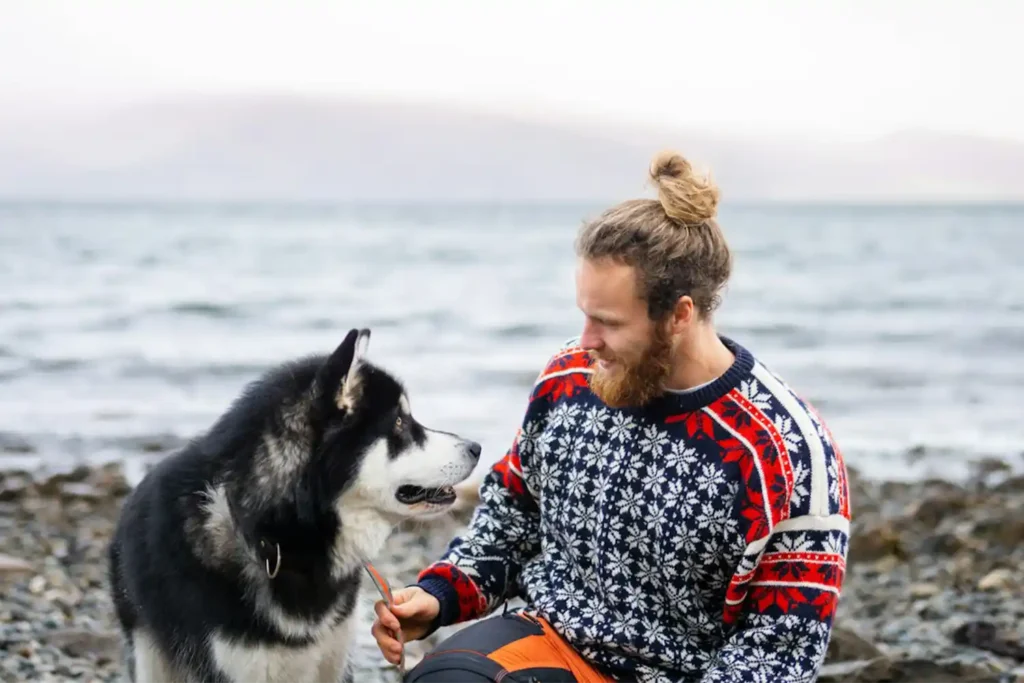
Owning an Alaskan Malamute: Budgeting and Financial Insights
Welcoming an Alaskan Malamute into your home is an exciting and rewarding decision. However, as with any pet, it’s essential to understand the financial commitment required to ensure your Malamute receives the care they deserve. From initial setup costs to ongoing expenses, thoughtful planning will help you provide a happy, healthy life for your furry companion.
Table: Cost Breakdown Analysis for Alaskan Malamute
| Expense Category | Initial Cost (USD) | Annual Cost (USD) | Value Rating |
|---|---|---|---|
| Adoption or Breeder Fees | $300–$2,500 | N/A | ⭐⭐⭐⭐⭐ |
| Food and Treats | N/A | $600–$1,500 | ⭐⭐⭐⭐⭐ |
| Grooming | $50–$100 | $400–$900 | ⭐⭐⭐⭐ |
| Veterinary Care | $200–$600 | $600–$2,000 | ⭐⭐⭐⭐⭐ |
| Pet Insurance | N/A | $300–$900 | ⭐⭐⭐⭐ |
| Toys and Enrichment | $50–$100 | $100–$400 | ⭐⭐⭐⭐ |
| Training Classes | $100–$500 | Optional | ⭐⭐⭐⭐⭐ |
| Emergency Care | $200–$5,000+ | N/A | ⭐⭐⭐⭐ |
Initial Costs: Preparing for Your Alaskan Malamute
Adoption vs. Breeder Fees
- Adoption Fees ($300–$600): Adopting from a shelter or rescue organization is a cost-effective option that often includes vaccinations, microchipping, and spaying/neutering.
- Breeder Fees ($1,500–$2,500): Purchasing from a reputable breeder ensures a health-tested puppy with lineage guarantees, but at a higher initial cost.
Essential Supplies for Day One
Prepare your home with the following essentials to ensure a smooth transition for your Alaskan Malamute:
| Item | Cost Range (USD) |
|---|---|
| Dog Crate | $60–$200 |
| Food and Water Bowls | $20–$50 |
| Leash and Collar | $40–$70 |
| Bed | $50–$150 |
| Toys | $30–$80 |
| Grooming Supplies | $50–$100 |
| Training Tools | $20–$40 |
Estimated Setup Cost: $300–$600
🐾 Tailwaggors Tip:
Invest in high-quality, durable supplies like sturdy crates and chew-proof leashes. Though they may cost more upfront, they save money in the long run by lasting longer.
Ongoing Annual Costs
Food and Treats
As a large and active breed, Alaskan Malamutes require a protein-rich diet to maintain their energy levels and health.
| Food Type | Annual Cost Range (USD) |
|---|---|
| Dry Food | $600–$1,000 |
| Wet Food (Optional) | $200–$400 |
| Specialty Diets | $1,200–$1,500 |
🐾 Tailwaggors Tip:
Mix dry kibble with occasional wet food or dog-safe human foods like cooked salmon or sweet potatoes for added nutrition. Consult your veterinarian for portion sizes tailored to your dog’s needs.
Veterinary Care
Regular veterinary care is critical to prevent health issues and manage common breed-related concerns like hip dysplasia and hypothyroidism.
| Category | Annual Cost Range (USD) |
|---|---|
| Wellness Exams | $150–$300 |
| Vaccinations | $50–$100 |
| Flea, Tick, and Worm Prevention | $100–$200 |
| Dental Cleaning | $300–$700 (every 1–2 years) |
🩺 Veterinary Insight:
“Routine checkups and preventive care are essential for Alaskan Malamutes. Early detection of health issues like joint problems or hypothyroidism can significantly improve quality of life and reduce long-term expenses,” advises Dr. Esther Knoetze, BSc, BVSc.
Grooming
Malamutes’ dense double coats require regular care to manage shedding and maintain skin health.
| Type | Annual Cost Range (USD) |
|---|---|
| Professional Grooming | $400–$900 |
| At-Home Grooming Supplies | $50–$100 |
🐾 Tailwaggors Tip:
Brush your Alaskan Malamute 2–3 times a week using a slicker brush to manage shedding and reduce the frequency of professional grooming visits.
Training and Enrichment
Proper training and enrichment activities are essential for a well-rounded Alaskan Malamute.
| Expense | Annual Cost Range (USD) |
|---|---|
| Training Classes | $100–$500 (initially) |
| Toys and Enrichment | $100–$300 |
Total Annual Training and Enrichment Cost: $200–$800
Hidden and Emergency Costs
- Emergency Vet Visits: $200–$5,000+ for surgeries, diagnostics, or critical care.
- Pet Boarding or Sitting: $30–$70 per day during travel.
- Prescription Diets: $500–$1,500 annually for conditions like allergies or obesity management.
🐾 Tailwaggors Tip:
Consider pet insurance to offset unexpected medical expenses. Most plans range from $300–$900 annually and can provide peace of mind during emergencies.
Unexpected costs can arise. Prepare with this comprehensive emergency guide for dog owners.
Cost-Saving Strategies for Alaskan Malamute Owners
- Buy in Bulk: Save on food and supplies by purchasing larger quantities during sales.
- Preventive Healthcare: Regular checkups and vaccinations reduce the risk of costly emergencies.
- DIY Grooming: Learn to brush, trim nails, and clean ears at home to minimize professional grooming expenses.
- Invest in Durable Supplies: Quality collars, beds, and toys last longer and reduce replacement costs.
Is Owning a Alaskan Malamute Worth the Investment?
Owning an Alaskan Malamute is both a financial and emotional investment, but the rewards are immeasurable. Their loyalty, intelligence, and adventurous spirit make them exceptional companions for active families. By planning for their care needs and budgeting accordingly, you ensure your Malamute enjoys a healthy and happy life.
🐾 Tailwaggors Tip:
Owning an Alaskan Malamute is more than a cost—it’s an investment in a loyal and adventurous family member. With proper planning and care, they’ll reward you with years of joy and companionship.
🩺 Veterinary Insight:
“Alaskan Malamutes thrive with attentive care, including high-quality nutrition, regular grooming, and preventive veterinary visits. Budgeting for these essentials ensures a long, healthy life for this incredible breed,” says Dr. Esther Knoetze, BSc, BVSc.
Disclaimer:
The cost estimates provided in the “Owning an Alaskan Malamute: Budgeting and Financial Insights” section are general approximations based on current market trends and commonly reported expenses in the United States. Actual costs may vary depending on factors such as location, individual pet needs, specific health conditions, and lifestyle choices.
These estimates are intended for informational purposes only and should not replace personal research or consultations with veterinary or pet care professionals. We recommend setting aside additional funds for unexpected expenses, including emergency veterinary care and specialized dietary or training needs, to ensure your Alaskan Malamute receives the best possible care.
Always consult with a veterinarian or trusted breeder for detailed guidance tailored to your specific situation. Tailwaggors is not responsible for discrepancies or unforeseen costs that may arise.
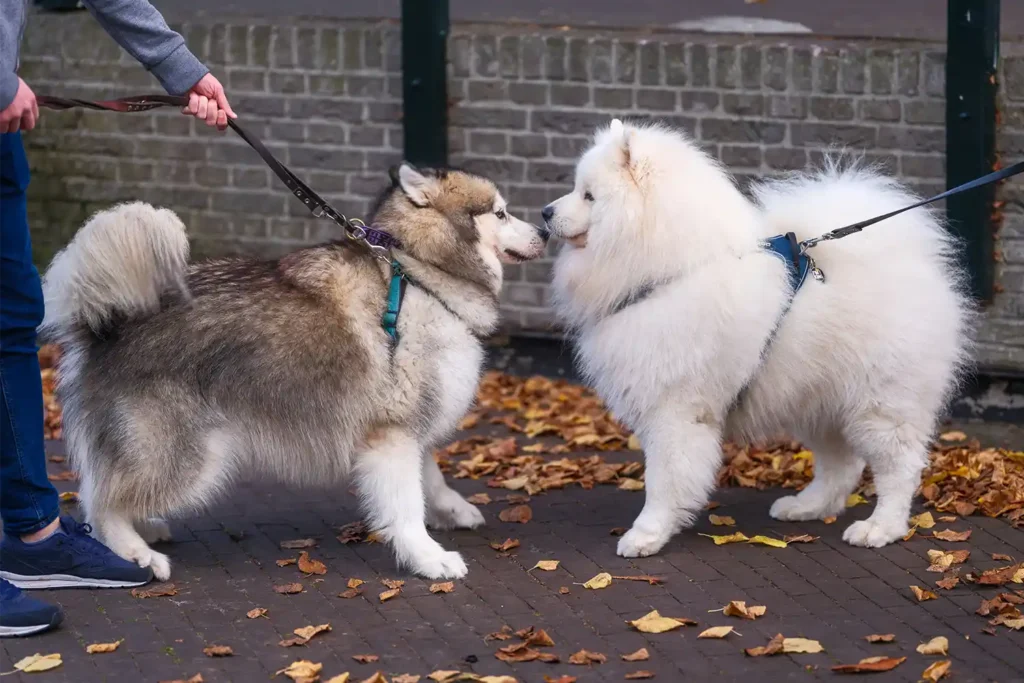
Breed Comparison: Alaskan Malamute vs. Other Popular Breeds
Choosing the right dog breed involves evaluating factors like size, temperament, grooming needs, and energy levels. Alaskan Malamutes, with their strength, loyalty, and independent nature, are often compared to other popular breeds like Siberian Huskies, German Shepherds, and Bernese Mountain Dogs. Let’s explore how the Alaskan Malamute measures up against these breeds to help you find the perfect fit for your lifestyle.
Table: How Does the Alaksan Malamute Compare?
| Aspect | Alaskan Malamute | Siberian Husky | German Shepherd | Bernese Mountain Dog |
|---|---|---|---|---|
| Size | Large (75–100 lbs / 34–45 kg) | Medium (35–60 lbs / 16–27 kg) | Large (50–90 lbs / 22–41 kg) | Extra Large (70–115 lbs / 31–52 kg) |
| Coat | Dense double coat | Dense medium coat | Medium to long double coat | Thick, long double coat |
| Personality | Loyal, independent, strong-willed | Energetic, playful, social | Intelligent, protective, loyal | Calm, affectionate, gentle |
| Grooming Needs | High (frequent brushing) | Moderate (regular brushing) | Moderate (regular brushing) | High (frequent brushing) |
| Energy Level | Very High (thrives on activity) | High (needs daily exercise) | Moderate to High (active) | Moderate (structured activity preferred) |
| Trainability | Moderate; independent thinker | Highly trainable; eager to please | Very trainable; excels in tasks | Trainable but independent |
| Compatibility with Pets | Good; early socialization needed | Excellent; adaptable and friendly | Good; protective instincts | Good; early socialization needed |
Alaskan Malamute vs. Siberian Husky
Alaskan Malamutes and Siberian Huskies share a rich sled-dog heritage but have distinct differences in size, energy, and care needs:
- Size and Strength: Malamutes are larger and built for endurance, while Huskies are smaller, faster, and more agile.
- Energy and Temperament: Huskies are more social and playful, ideal for families. Malamutes are loyal and independent, requiring experienced owners.
- Grooming Needs: Both breeds have dense coats, but Malamutes shed more heavily, especially during seasonal changes.
🐾 Tailwaggors Tip:
If you want a strong, loyal dog with a commanding presence, the Alaskan Malamute is ideal. For a smaller, playful breed with easier grooming needs, the Siberian Husky may be the better fit.ant a playful, easy-to-groom dog, the Labrador Retriever may be the better choice.
Alaskan Malamute vs. German Shepherd
German Shepherds and Alaskan Malamutes are both intelligent, large breeds, but their roles and temperaments differ significantly:
- Trainability: German Shepherds excel in obedience and protection work. Malamutes, while intelligent, require patience and consistency in training due to their independent streak.
- Energy Levels: Malamutes thrive on vigorous activities like sledding, while German Shepherds enjoy structured tasks like agility or herding.
- Temperament: German Shepherds are protective and make excellent watchdogs. Malamutes are friendlier and less inclined to guard.
🐾 Tailwaggors Tip:
For a highly trainable, protective companion, choose the German Shepherd. If you prefer an adventurous, strong-willed partner for outdoor activities, the Alaskan Malamute is a fantastic choice.
Alaskan Malamute vs. Bernese Mountain Dog
Both GBoth breeds share calm and affectionate temperaments but differ in size, grooming needs, and activity preferences:
- Size and Energy Levels: Bernese Mountain Dogs are larger and prefer moderate, structured activities. Malamutes are more energetic, requiring frequent physical and mental stimulation.
- Grooming Needs: Both breeds have dense coats, but Bernese Mountain Dogs require more frequent brushing to prevent matting.
- Space Requirements: Bernese Mountain Dogs are better suited for spacious homes, while Malamutes adapt well to active households with outdoor space.
🐾 Tailwaggors Tip:
If you want a large, calm companion with a gentle demeanor, the Bernese Mountain Dog is a great fit. For an adventurous, high-energy partner, the Alaskan Malamute is unmatched.
Why Choose the Alaskan Malamute?
The Alaskan Malamute’s loyalty, strength, and adventurous spirit make it a perfect match for active, dedicated owners. Whether you’re hiking, sledding, or enjoying the outdoors, this breed thrives when given purpose and companionship. Their independent nature and grooming needs require commitment, but the rewards are well worth the effort.
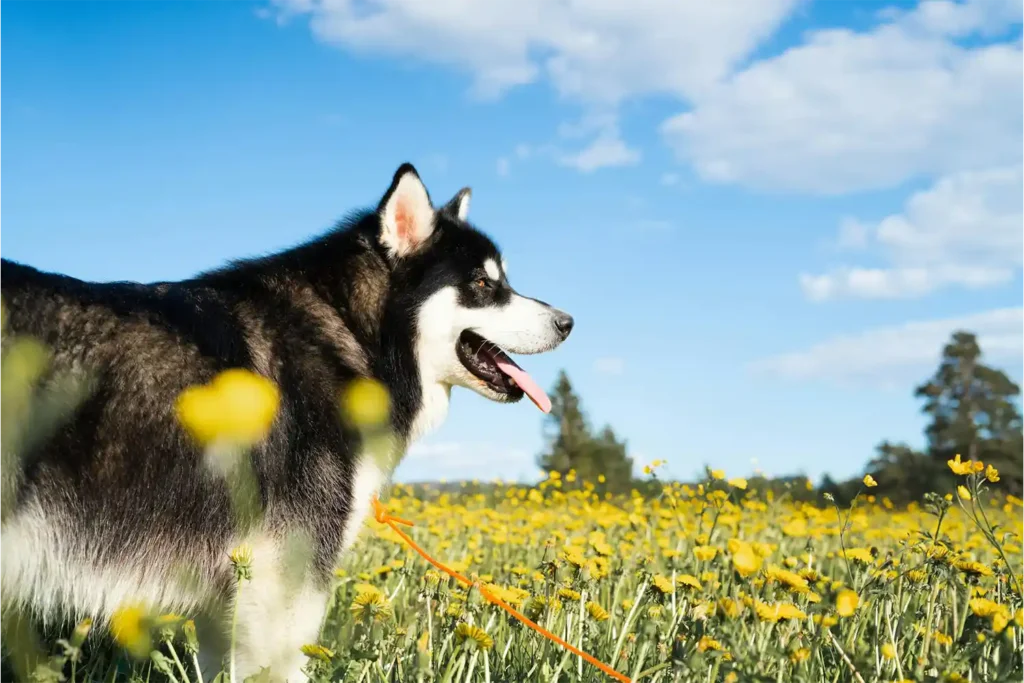
Frequently Asked Questions About the Alaskan Malamute
Alaskan Malamutes are known for their strength, loyalty, and adventurous spirit. Whether you’re considering adopting one or already have a Malamute in your family, these FAQs answer the most common questions about this remarkable breed.
1. Are Alaskan Malamutes hypoallergenic?
+No, Alaskan Malamutes are not hypoallergenic. Their thick double coat sheds heavily, especially during seasonal changes, making them unsuitable for allergy-sensitive households.
🐾 Tailwaggors Tip:
Regular brushing during shedding seasons reduces loose fur and dander. Consider using a HEPA air filter in your home to minimize allergens.
2. How much do Alaskan Malamutes weigh?
+Alaskan Malamutes are large, muscular dogs:
- Males: 85–100 lbs (38.5–45 kg)
- Females: 75–85 lbs (34–38.5 kg)
Their size and strength make them ideal for physically active families and working roles.
3. How long do Alaskan Malamutes live?
+With proper care, Alaskan Malamutes typically live 10–14 years. Preventive care and a balanced lifestyle are essential for their longevity.
🩺 Veterinary Insight:
“Malamutes are prone to joint issues like hip dysplasia. Regular exercise, joint supplements, and a nutrient-rich diet can improve their lifespan and quality of life,” advises Dr. Esther Knoetze, BSc, BVSc.
4. Are Malamutes good with children?
+Yes, Alaskan Malamutes are affectionate and patient with children. However, their large size and high energy require supervision to ensure safe interactions.
🐾 Tailwaggors Tip:
Teach children to respect boundaries and avoid rough play to maintain a positive relationship between your Malamute and young family members.
5. Do Alaskan Malamutes bark a lot?
+Malamutes are not frequent barkers but are known for their expressive howls and “talking.” These vocalizations can range from playful to alerting behaviors.
6. How much exercise do Malamutes need?
+Alaskan Malamutes are high-energy dogs requiring at least 1–2 hours of daily exercise. Ideal activities include:
- Long hikes or jogs
- Weight-pulling or sledding
- Interactive games like fetch or scent tracking
🐾 Tailwaggors Tip:
Combine physical activities with mental challenges, like puzzle toys or training sessions, to keep your Malamute happy and well-stimulated.
7. Are Malamutes easy to train?
+While intelligent, Malamutes are independent thinkers and can be challenging to train. They need consistent, positive reinforcement and a firm but patient owner.
🐾 Tailwaggors Tip:
Start training early, focusing on short, engaging sessions. Using treats and praise keeps their attention and builds trust.
8. What are the grooming needs of a Malamute?
+Their thick double coat requires regular upkeep:
- Brushing: 2–3 times weekly and daily during shedding seasons
- Bathing: Every 6–8 weeks or as needed, using a gentle dog-safe shampoo
- Nail Trimming: Every 2–3 weeks to maintain healthy mobility
🩺 Veterinary Insight:
“Regular grooming not only keeps your Malamute’s coat healthy but also provides opportunities to check for lumps, ticks, or skin irritations,” says Dr. Knoetze.
9. Are Malamutes prone to health issues?
+Yes, Alaskan Malamutes are predisposed to certain conditions, including:
- Hip Dysplasia: A joint condition causing pain and arthritis
- Hypothyroidism: A hormonal imbalance leading to weight gain and lethargy
- Bloat (GDV): A life-threatening condition requiring immediate veterinary attention
Preventive care and regular screenings are key to managing these risks.
10. Can Alaskan Malamutes live in apartments?
+No, Malamutes are best suited for homes with ample outdoor space. Their size, energy, and need for exercise make apartment living challenging.
🐾 Tailwaggors Tip:
If you have limited space, ensure your Malamute has plenty of outdoor exercise and mental enrichment to prevent boredom.
Why These FAQs Matter
Alaskan Malamutes are extraordinary companions, but understanding their needs helps you provide a safe and fulfilling home for them. These FAQs offer key insights to help you care for your Malamute and ensure a rewarding relationship.
Are Alaskan Malamutes safe around plants? Learn which plants to avoid with this vet-approved guide on toxic plants for dogs. Be prepared for emergencies by learning first aid for pets.
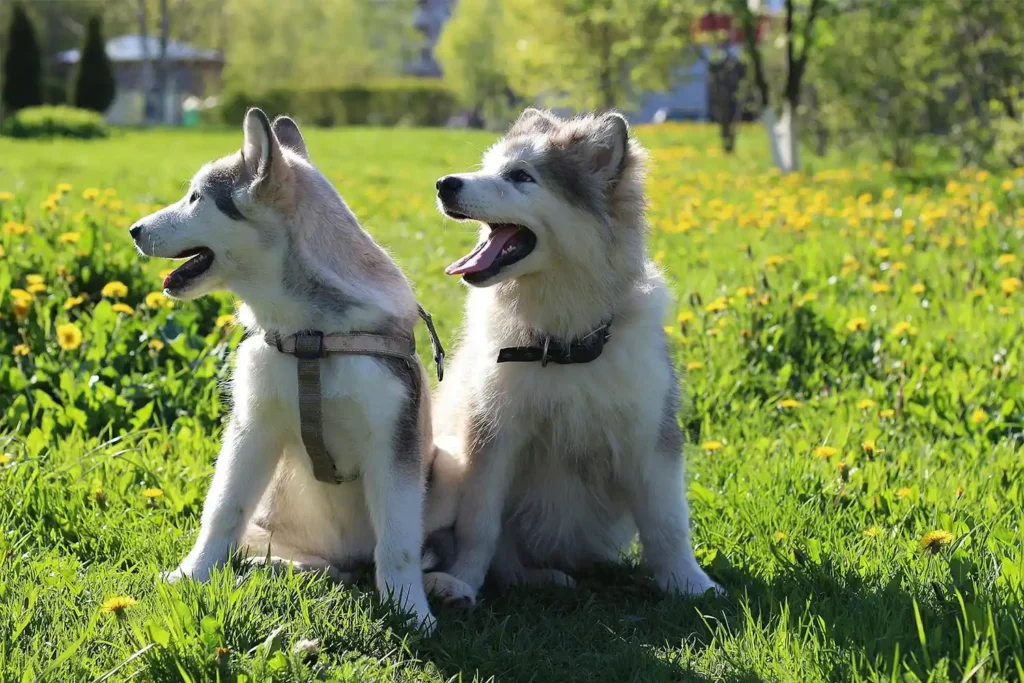
Conclusion: Wrapping Up the Ultimate Guide to the Alaskan Malamute
The Alaskan Malamute is a breed that embodies strength, loyalty, and an adventurous spirit. As one of the oldest Arctic sled dogs, their history and personality reflect their heritage as hardworking and devoted companions. Whether as a loving family member, an energetic outdoor partner, or a loyal working dog, Alaskan Malamutes excel in roles that celebrate their intelligence and endurance.
With their affectionate demeanor and independent nature, Malamutes bring joy and purpose to active, dedicated owners. They’re not just pets—they’re lifelong companions that thrive when given love, structure, and plenty of activity.
Explore 7 proven strategies to strengthen your connection with your pet for a lifelong bond.
Providing the Best Care for Your Alaskan Malamute
To help your Malamute live a fulfilling and healthy life, focus on these essential care practices:
- Grooming: Brush 2–3 times a week (daily during shedding seasons) to manage their thick coat and prevent matting.
- Nutrition: Feed a high-quality, protein-rich diet tailored to their size and energy levels.
- Exercise and Enrichment: Provide 1–2 hours of vigorous physical activity daily, combined with mental stimulation to engage their working-dog instincts.
- Veterinary Care: Schedule routine wellness visits, preventive screenings, and early intervention for breed-specific concerns like hip dysplasia, hypothyroidism, and bloat.
Is the Alaskan Malamute Right for You?
Adopting an Alaskan Malamute is a deeply rewarding experience, but it requires commitment. These high-energy, strong-willed dogs are best suited for families and individuals who:
- Love outdoor activities like hiking, sledding, or long-distance running.
- Can provide regular grooming and a structured care routine.
- Are experienced with independent breeds that require consistent training and leadership.
If you’re ready to welcome an Alaskan Malamute into your life, you’ll gain not just a pet, but a loyal and adventurous companion who offers years of unconditional love and unforgettable memories. Read more on 10 things to concider before bringing a new pet home.

Share Your Alaskan Malamute Story!
We’d love to hear about your experiences with Alaskan Malamutes! Share your favorite moments, care tips, and insights in the comments section below. Don’t forget to connect with us on social media for expert advice, inspiring stories, and updates about Alaskan Malamutes and other incredible breeds. Contact Tailwaggors.
Meet the Alaskan Malamute—a loyal, strong, and intelligent companion!
🐾✨ Dive into this ultimate guide to discover their personality, care tips, and why they’re one of the most captivating breeds in the world.
❤️ Share with fellow dog lovers and celebrate the celebrate the majestic charm of the Alaskan Malamute! 🐶❤️


